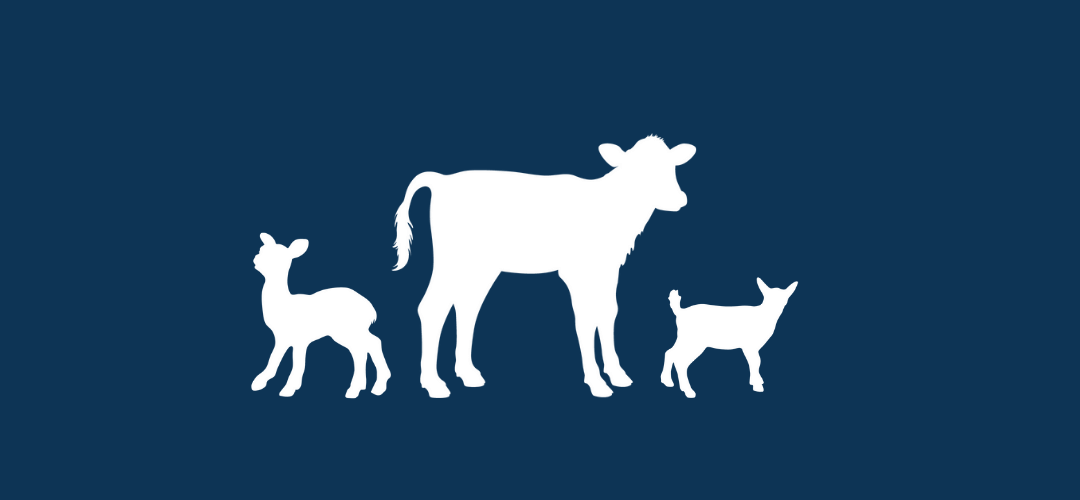-
Bottle Cleaning Best Practices
- Oct 11, 2024
- By Grober Nutrition
- In Canada
In the first few weeks of life, animal immune systems are still developing. It’s also a time when animals are very efficient at turning feed in to gain. That’s why it’s so important to give them proper nutrition, and make sure you’re doing everything you can to prevent illness. One…
-
Reducing Abomasal Bloat in Artificially Raised Lambs
- Jul 09, 2024
- By Grober Nutrition
- In Canada
Abomasal bloat in lambs, also known as typhany, is a major issue in lambs that often results in death. What is abomasal bloat? Some farms have reported having only sporadic incidences of bloat, while others have seen up to a 30% death loss in lambs under 4 weeks of age.…
-
Why and How to Weigh Your Calves
- May 13, 2024
- By Grober Nutrition
- In Canada
Weighing calves is a good way to benchmark how well your milk fed period is going. Why you should weigh your calves When it comes to calf management, the best thing you can do as a producer is keep data. By tracking health status, treatments, drinking levels and intake of…
-
How to mix milk replacer
- Apr 09, 2024
- By Grober Nutrition
- In Canada
Proper mixing and feeding of milk replacer is crucial to the early health and development of young animals. When mixing milk replacer there are a few things to remember. Before we dive in, let’s start with the tools you will need: Bucket Measuring cup for water Scale Thermometer Whisk or…
-
Got Water?
- Jan 05, 2024
- By Grober Nutrition
- In Canada
Water plays a big role in enhancing starter intake, and in the quality and deliverance of milk replacer. There are many factors that influence the success of the pre-weaning period of a calf’s life. A large emphasis is often placed on the importance of providing good quality and consistent feed…
-
Bedding – Key to Calf Comfort
- Dec 11, 2023
- By Grober Nutrition
- In Canada
Can you imagine spending up to 20 hours a day lying down? Many people would consider that being lazy, but for calves, it’s a good thing! A high amount of lying time is an indication that they’re comfortable in their environment and putting their energy towards growth. So, with all…
-
Managing Behaviour at Weaning
- Oct 30, 2023
- By Grober Nutrition
- In Canada
Weaning can be a stressful period for a calf, quickly offsetting their performance trajectory if done at the wrong time, or in the wrong way. Whether managing a calf destined for meat or milk production, the basic concepts of readiness to wean remain the same. Factors such as time on…
-
Is an automatic lamb feeder right for your farm?
- Oct 17, 2023
- By Grober Nutrition
- In Canada
Automatic lamb feeders have seen an increase in popularity as producers are breeding ewes that are more prolific and sheep farms have become larger. The use of automatic feeders may help to improve lamb welfare, as noted by producers who have switched from hand feeding. This may be related to…
-
Preventing Abomasal Bloat
- Sep 05, 2023
- By Grober Nutrition
- In Canada
Challenges faced by calves such as abomasal bloat and rumen drinking can often be avoided by maintaining optimal management practices. Symptoms of abomasal bloat Abomasal bloat onset tends to be difficult to alleviate, and there are many factors that can contribute to its onset. Often, calves less than 2 weeks…
-
Surplus Calf Care
- Aug 01, 2023
- By Grober Nutrition
- In Canada
Providing top care to both replacement heifers and the surplus calf is of utmost importance to improve profitability for the dairy farmer and veal or beef producer. Changes to the surplus calf market Discussions around surplus calf care have increased in recent years due to the genetic advancements of sexed…
-
Milk Replacer Storage & Shelf Life
- Jun 27, 2023
- By Grober Nutrition
- In Canada
To keep your milk replacer fresh and maintain all key components, how you store your milk replacer matters. Here are 5 storage recommendations to keep your milk replacer at peak performance. Milk replacer should be first in, first out. So whatever milk replacer you’re opening first, that should be used…
-
What does Partially Acidified Milk Replacer Mean?
- Dec 08, 2022
- By Grober Nutrition
- In Canada
When talking about acidification it is important to clarify what type of acidification you are referring to. Fully acidified is a process done on farm to lower the final mixtures pH to approximately 4.2. This is done on farm by adding formic or citric acids to the milk or milk…
©2016 Grober Nutrition. All Rights Reserved.














